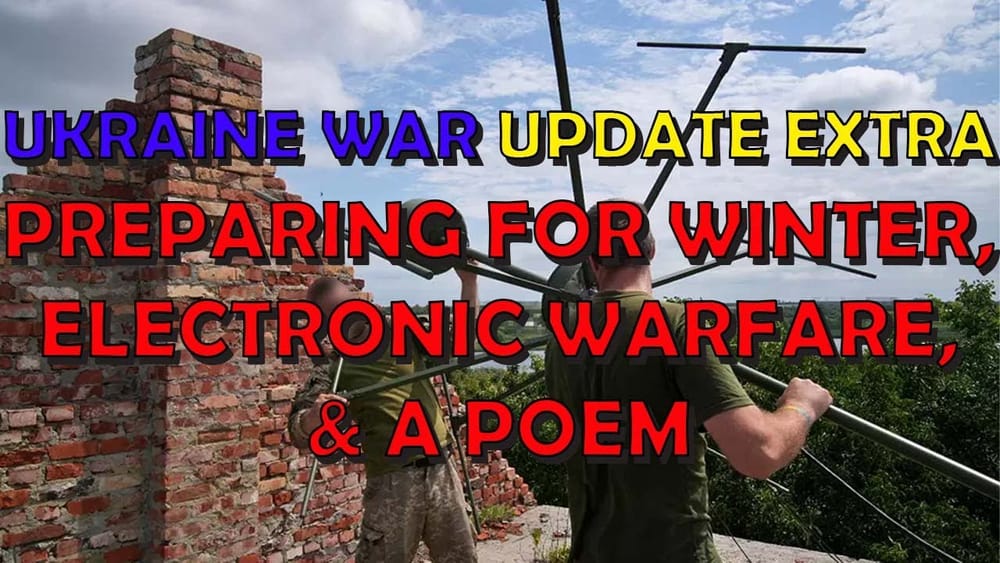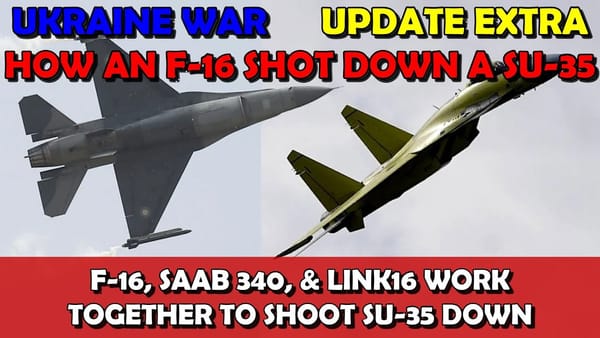Ukraine War Upd. EXTRA: Prep for Winter, Electronic Warfare, & a Poem
Table of Contents 📖
| Topic ID | Topic Title | Timestamp |
|---|
"What will survive from the history of the world in which we lived will be the words and music of a few geniuses who desperately tried to warn us, tried to explain, but failed to explain anything or save anyone."
Hello Team!
Jonathan introduces the video as an extra update providing additional insights and information to give viewers a greater understanding of the war in Ukraine. He will be going through various articles and reports, including from the Royal United Services Institute (RUSI), a UK military think tank, and an essay by Valery Zaluzhnyi published in The Economist.
Return to top⤴️
Preparing for Winter
- Both Russia and Ukraine have struggled to generate offensive combat power in 2023 due to heavy attrition of experienced personnel. Ukrainian forces have been restricted to company-scale operations.
- Sustaining a high Russian casualty rate suppresses their ability to train sufficient new troops to conduct effective offensive action. Ukraine needs to balance reconstitution with keeping pressure on Russian forces.
- If Ukraine does not continue pressuring the Russian line in winter, Russia may expand their defence lines, making future Ukrainian offensives more difficult.
- Ukraine gained fires superiority over the summer but the ammunition consumption rate of over 200,000 rounds per month presents supply challenges. Russian ammunition production is rising with additional supplies from Iran, North Korea and other states.
- Russia's impending strikes on Ukrainian critical infrastructure remain a strategic threat. The missiles must be intercepted but interceptors are scarce. Russia is producing over 100 long-range missiles per month, supplemented by Shahed drones from Iran.
Electronic Warfare
- Electronic warfare plays a critical role in modern conflict. Russia had 18,000 electronic warfare troops at the time of the invasion but the effect was less than expected. They have since adapted to using smaller, more mobile devices.
- Russian systems like Zhitel and Pole-21 are proving effective at jamming GPS and satellite links, disabling drones that direct artillery. Many NATO-provided weapons to Ukraine are vulnerable to such jamming.
- Russia is adapting its electronic warfare approach, making antennas more disposable and distributed. This reflects a change in mindset.
- According to Valery Zaluzhnyi, Russia maintains a significant electronic warfare superiority. Ukraine has achieved near parity through international assistance but this significantly complicates achieving superiority for either side.
- Ukraine faces the need to overcome the military parity problem, which is especially acute in the current counter-offensive actions. Parity in electronic warfare, along with air defences, minefields and counter-battery fire, stipulated the existence of this problem.
Wrap up
Jonathan concludes the video by sharing a poem by Serhiy Zhadan, a Ukrainian poet, read by actor Jack Gleeson at a recent event in London. The poem, titled "Headphones", reflects on what will survive from the history of the world we live in.
Return to top⤴️



